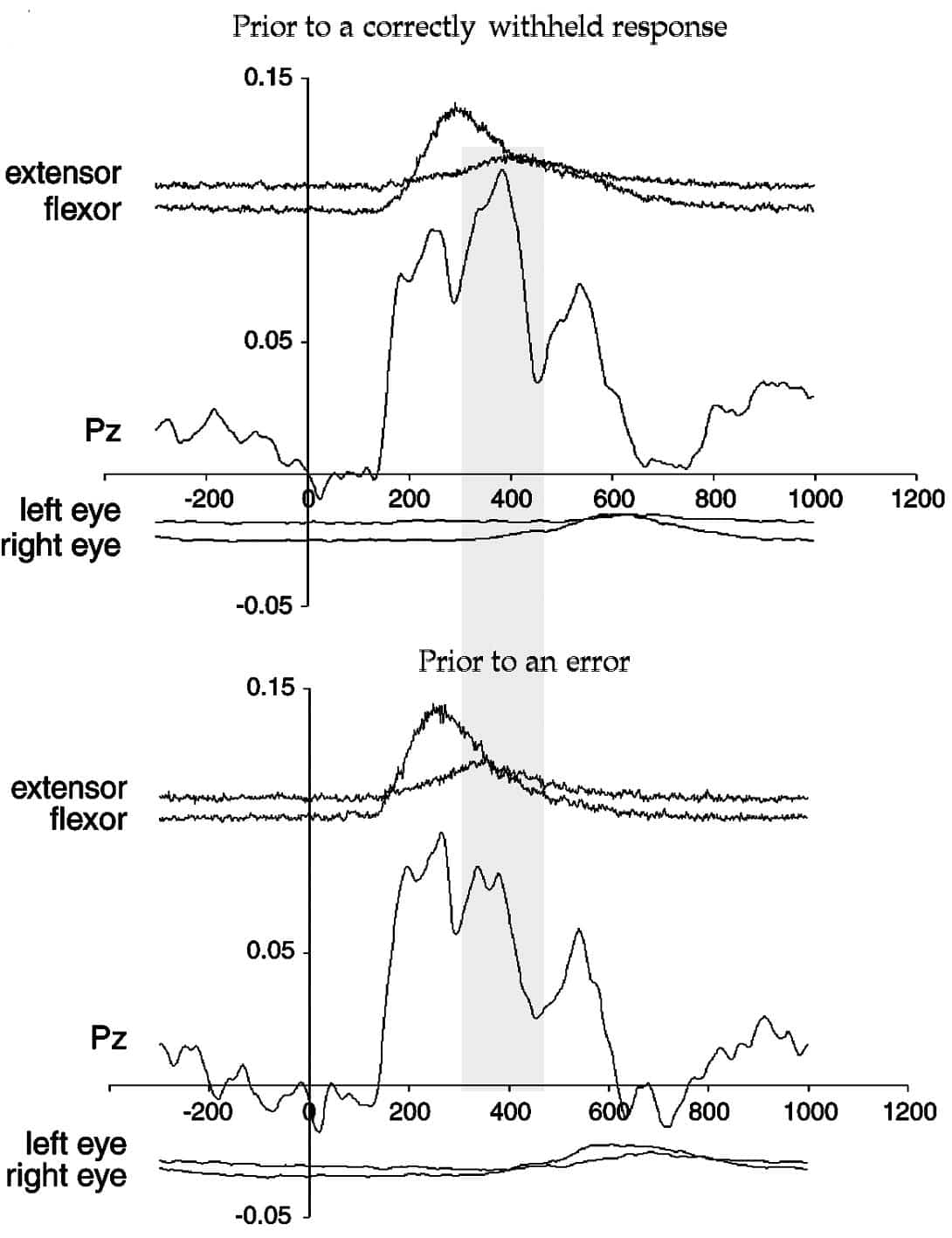This is the first demonstration that imminent absent-minded slips of action can be predicted on the basis of an electrophysiological signal.
25 normal adult subjects (age 20 – 47;13 women) performed repeated trials of a computerised Go-No Go task with local ethical committee approval. Each subject completed 10 blocks of the SART task. Each block comprised 225 presentations of single digits (1-9) at a regular rate of one digit every 1.15 seconds on a computer screen. The order of the digits was randomised. On each trial, the digit was presented for 250 msec followed by a masking pattern for 900 msec. Subjects were asked to press a computer mouse key as quickly as possible for every number presented with the exception of 3, to which no response should be made. Subjects were given an opportunity to rest from the task between blocks. EEG recordings were made from Fz, Cz, Pz using silver/silver chloride electrodes (Grass). Movement of the eyes was monitored using Electro-oculogram (EOG) electrodes (F7 and F8). All signals were referenced to A2. EMG in the responding hand was monitored using bipolar silver/silver chloride electrodes from an index finger flexor (first dorsal interosseous muscle) and an index finger extensor (extensor indicis). EEG was amplified 20, 000 fold, EMG 1000 fold, and EOG 2000 fold using AC coupled amplifiers (Biopac Systems Inc., Santa Barbara). Filtering was 10 Hz-5 KHz, 1-35 Hz and 0.05 Hz-100 Hz for EMG, EEG and EOG respectively. Full wave rectification of the EMG was performed digitally. The type of visual stimulus (Go or No Go), its time of presentation and the time of key press were logged digitally with the biological signals. This enabled every trial to be indexed and identified according to type of stimulus and type of response (correct press, false press or correct withhold). All data was digitised at 500 Hz, archived and averaged off-line using a purpose-written averaging program. Statistical analysis was performed with SPSS v8.0.
A highly significant reduction in the normalised P300 component of the visually evoked EEG potential was observed on the trial prior to the trial on which an action error was made (mean 0.92, S.D. 0.33) compared to the trial preceding a correctly withheld response(mean 1.28, S.D. 0.48; paired t = 3.63, P < 0.001, df = 24 see also Figure).
Furthermore, the general propensity of a subject to make errors was strongly predicted by the mean amplitude of subjects’ P300/ P200 component ratio throughout their task performance (r = 0.46, P < 0.05). The ability to predict impending action errors with passive scalp recording has potential applications for neurological rehabilitation and industry.

